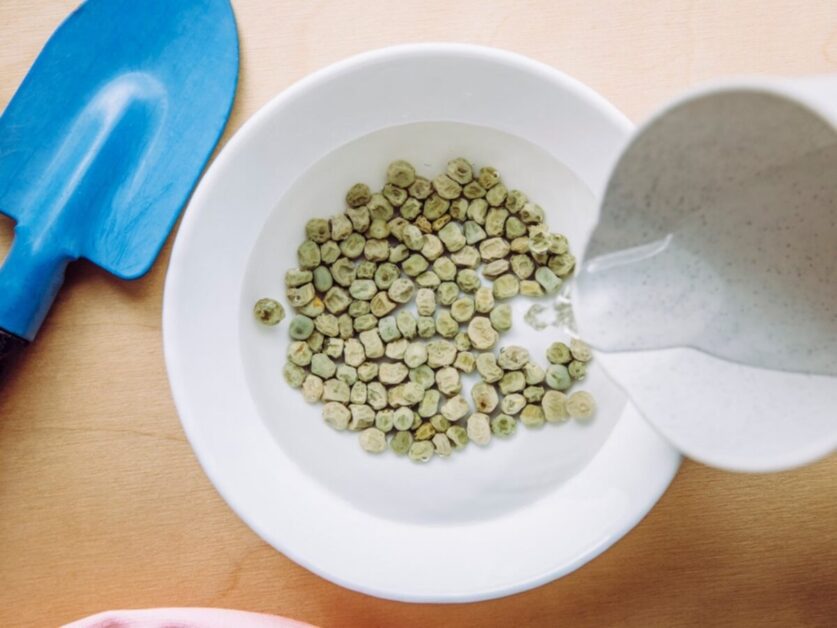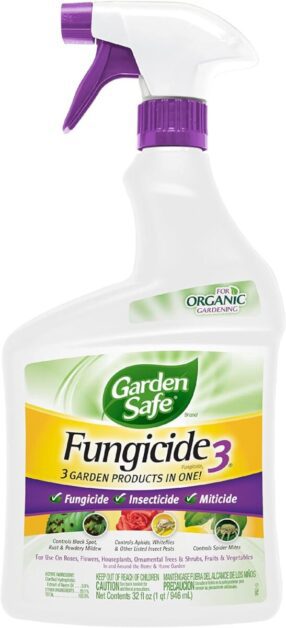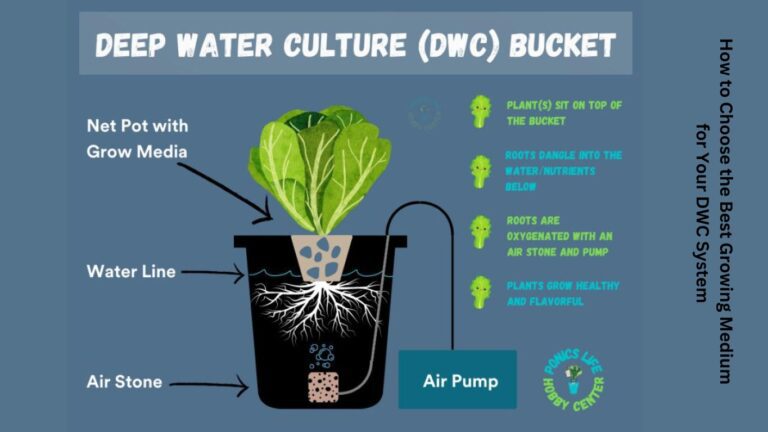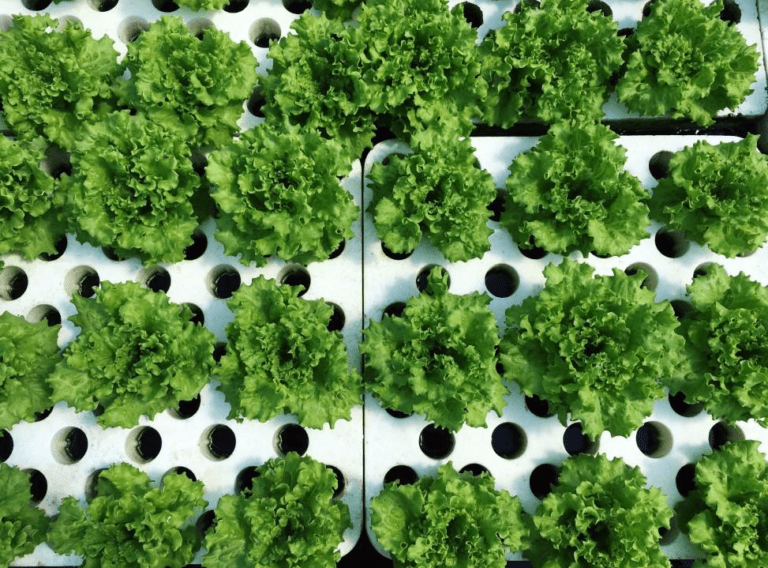Soaking Seeds Before Planting: Is It Really Necessary?
“Are you a budding gardener wondering if soaking seeds before planting is just an old wives’ tale or a crucial step for success? Well, let’s dig into the dirt and find out! While some swear by the practice, others dismiss it as unnecessary fuss. But here’s the scoop: soaking seeds can actually kickstart germination, leading to healthier plants and better yields.
As a seasoned gardener with years of hands-on experience, I’ve seen firsthand the difference it can make. In this blog, we’ll explore the science behind soaking seeds, weigh the pros and cons, and help you decide whether it’s worth your time. So, if you’re ready to take your gardening game to the next level, grab your watering can and let’s dive in!”
Table of Contents
Enhances Germination Rates
Enhancing germination rates is a crucial aspect of successful gardening and plant cultivation. By employing various techniques and utilizing the right resources, gardeners can significantly improve their germination rates, leading to healthier and more robust plants.
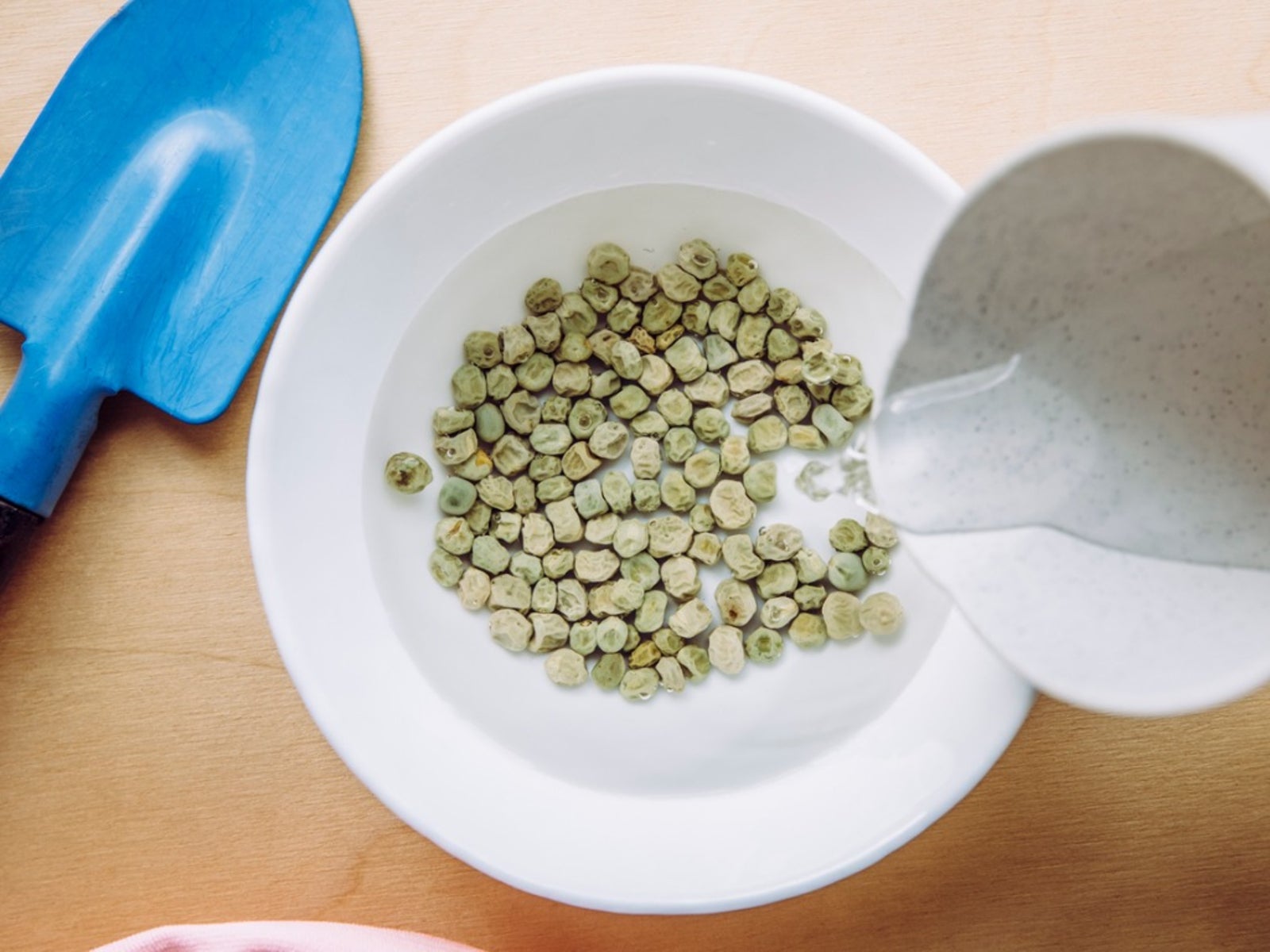
- Optimal Environmental Conditions: Ensure the ideal temperature, moisture levels, and light exposure for germination.
- Seed Quality Matters: Use high-quality seeds from reputable sources to increase germination success.
- Consider Freshness and Viability: Choose seeds based on factors like freshness, viability, and genetic purity.
- Proper Seed Storage: Implement correct storage practices to maintain seed viability over time.
- Enhanced Germination Rates: Understand and apply these techniques to improve germination rates.
- Healthy Seedlings Emergence: Witness the emergence of healthy seedlings, setting the stage for plant growth.
- Thriving Garden: Enjoy a thriving garden with vibrant and productive plants, thanks to enhanced germination rates.
Speeds Up Seedling Development
Speeding up seedling development is a crucial factor in achieving successful gardening outcomes. By reducing the time it takes for seedlings to mature, gardeners can enjoy a more efficient and productive growing process. When seedlings develop quickly, they can reach the stage of transplanting or harvesting sooner, allowing for earlier planting and extended growing seasons.
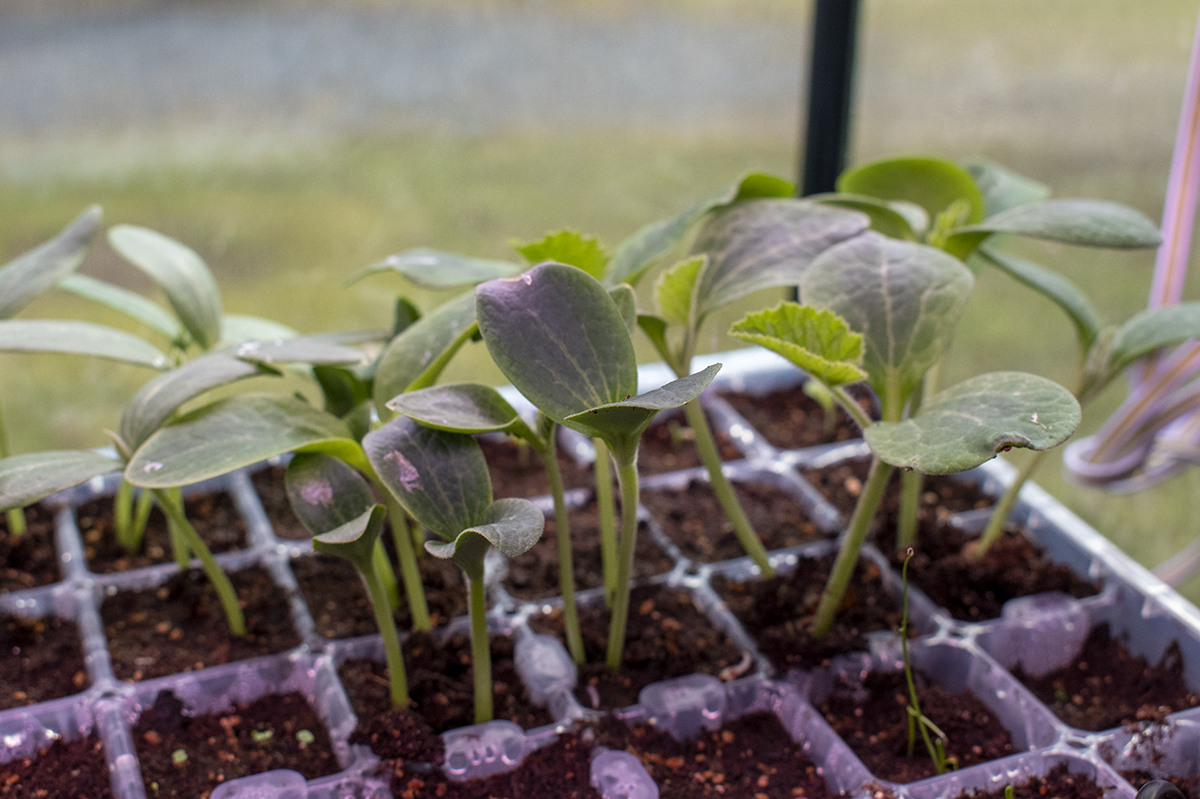
- Proper Nutrition:
- Provide seedlings with the right nutrients in balanced proportions.
- Encourages healthy growth and development.
- Essential for robust seedlings.
- Optimal Environmental Conditions:
- Maintain suitable temperature, humidity, and light levels.
- These factors significantly impact seedling development.
- Ensure seedlings receive ideal conditions for rapid growth.
- Hydroponics:
- Soil-less cultivation method.
- Nutrient-rich solution delivered directly to plant roots.
- Enhances nutrient absorption and promotes seedling development.
- Growth-Promoting Hormones and Supplements:
- Use hormones and supplements to stimulate root growth and overall plant development.
- Boosts seedling vigor.
- Close Monitoring and Adjustments:
- Observe seedlings throughout their development.
- Make necessary adjustments based on growth progress.
- Ensures healthier, stronger plants ready for transplantation.
Remember to tailor these strategies to your specific plants and growing conditions. Happy gardening! 🌱🌿🌞
Improves Overall Plant Health
To achieve overall plant health, it is vital to understand the factors that contribute to its well-being. When plants are healthy, they are more resistant to diseases and pests, they have better growth and productivity, and they display vibrant and lush foliage.

- Provide Essential Nutrients: Supply plants with necessary nutrients like nitrogen, phosphorus, and potassium to support optimal growth.
- Ensure Balanced Water Supply: Ensure plants have access to a well-balanced and sufficient water supply for efficient nutrient transport and biochemical reactions.
- Promote Efficient Water Absorption: Facilitate efficient water absorption to maintain turgidity and structural integrity, enhancing plants’ ability to withstand stress.
- Implement Nutrient Management: Practice proper nutrients management to optimize plant health and growth.
- Optimize Irrigation Practices: Employ irrigation techniques that maximize water efficiency and promote healthy root development.
- Maximize Root Development: Encourage robust root development through strategies like using organic amendments and providing optimal growing conditions.
- Nurture Strong and Resilient Plants: By addressing these fundamental needs, gardeners can nurture plants that are strong, resilient, and better equipped to thrive in their environment.
In the following paragraphs, we will explore specific techniques and strategies that can be employed to improve overall plant health, including the use of organic amendments, optimizing irrigation practices, and maximizing root development.
Increases Nutrient Availability
In order for plants to thrive and reach their full potential, it is essential that they have access to an ample supply of nutrients. Increases in nutrient availability can significantly enhance the overall health and development of plants.
- Essential Biological Processes:
- Nutrients provide building blocks for vital processes like photosynthesis, respiration, and reproduction.
- Nitrogen, phosphorus, and potassium are crucial for protein synthesis, enzyme function, and energy production.
- Stronger Root System:
- Increased nutrients lead to a robust root system.
- Plants explore a larger soil volume, accessing nutrients deeper in the soil profile.
- Enhanced Nutrient Uptake:
- Well-developed roots improve mineral and trace element uptake.
- Overall nutrient availability is enhanced.
- Healthier, Vigorous Plants:
- Nutrient-rich plants are better equipped to withstand stressors and diseases.
Remember to provide balanced nutrients and monitor plant health for optimal growth. Happy gardening! 🌱🌿🌞
Enhances Water Absorption
Water absorption is a crucial process for the growth and development of plants. It plays a vital role in nutrient uptake and overall plant health. When plants have enhanced water absorption capabilities, they are able to take in a greater amount of water from the soil, ensuring that they remain properly hydrated and nourished.
- Improved Drought Resistance:
- Enhanced water absorption allows plants to store water within their tissues, acting as a reservoir during dry periods.
- When water is scarce, plants can draw from these internal reserves, increasing their chances of survival.
- Faster Recovery After Drought:
- Efficient water absorption enables plants to recover more quickly once water becomes available again.
- They can replenish their water stores and resume normal growth and metabolic processes.
- Nutrient Transport:
- Water serves as a carrier for essential nutrients dissolved in the soil.
- Enhanced water absorption facilitates the transport of minerals (such as nitrogen, phosphorus, and potassium) from the soil to different parts of the plant.
- Nutrients are crucial for growth, flowering, and fruit production.
- Healthier Plant Vigor:
- Access to a larger pool of nutrients due to improved water absorption leads to overall plant health and vigor.
- Well-nourished plants are better equipped to resist pests, diseases, and environmental stressors.
- Efficient Irrigation Practices:
- When plants absorb water effectively,less water is wasted through runoff or evaporation.
- Gardeners and farmers can optimize irrigation, conserving water resources and reducing costs.
- Optimal Development:
- Efficient water absorption ensures that plants receive the necessary hydration and nourishment.
- This supports their growth, flowering, and fruiting, contributing to overall productivity.
In summary, enhancing water absorption benefits plants by promoting survival, nutrient uptake, and efficient resource utilization. Gardeners can play a vital role in maintaining healthy plants by fostering effective water absorption mechanisms. 🌱💧🌿
The following table show the benefits of enhancing water absorption:
| Benefits of Enhancing Water Absorption | Description | Importance |
| Drought Resistance | Efficient water absorption helps plants withstand periods of drought or water scarcity. | Enables plants to store water within their tissues, promoting survival and rapid recovery when water becomes available again. |
| Quick Recovery After Drought | Enhanced water absorption allows plants to recover more quickly following drought conditions. | Speeds up the recovery process by utilizing stored water for growth and development. |
| Nutrient Uptake | Facilitates the transport of essential nutrients from the soil to different parts of the plant. | Water serves as a carrier, aiding in the dissolution and transport of minerals necessary for plant growth and overall health. |
| Improved Overall Plant Health | Access to a larger pool of nutrients through enhanced water absorption contributes to improved plant health and vigor. | Plants receive a more consistent and ample supply of nutrients, supporting robust growth, flowering, and fruiting. |
| Efficient Irrigation Practices | Enhances water absorption efficiency, leading to more effective irrigation practices | Reduces water wastage through runoff or evaporation, contributing to water conservation and cost savings for gardeners and farmers. |
| Optimal Hydration and Nourishment | Ensures plants receive the necessary hydration and nourishment for optimal development. | Contributes to the overall well-being of plants by preventing water stress and supporting essential physiological processes. |
| Environmental Sustainability | Contributes to sustainable water use in agriculture and gardening. | Promotes responsible water management, aligning with environmental conservation efforts. |
| Increased Productivity | Healthy plants with enhanced water absorption capabilities are more likely to be productive in terms of yield and quality. | Supports the production of high-quality fruits, vegetables, and flowers, benefiting both home gardeners and commercial agriculture. |
Facilitates Root Growth
- Importance of Root Growth: Recognize root growth as crucial for overall plant health and development.
- Role in Nutrient Uptake: Understand how roots facilitate nutrient uptake from the soil, essential for plant growth.
- Water Absorption: Acknowledge the role of roots in absorbing water, vital for plant hydration and survival.
- Anchoring in Soil: Highlight roots’ function in anchoring plants securely in the soil, preventing erosion and instability.
- Optimal Growth Conditions: Create conditions conducive to root growth, including proper soil structure and moisture levels.
- Extensive Root System: Understand that optimal root growth leads to an extensive root system with fine root hairs, increasing nutrient and water absorption.
- Efficient Resource Extraction: Emphasize how an enhanced root system allows plants to efficiently extract essential minerals from the soil.
- Promotion of Stability: Point out that a robust root system promotes stability, preventing plants from being uprooted by environmental factors like wind and rain.
- Resilience to Stress: Highlight how facilitating root growth contributes to plants’ ability to withstand environmental stresses and thrive in their ecosystems.
Helps Break Seed Dormancy
Seed dormancy is a natural phenomenon that hinders the germination process in many plant species. It acts as a protective mechanism, allowing seeds to survive unfavorable conditions until the right time for growth. However, breaking seed dormancy becomes essential for gardeners and plant enthusiasts who want to ensure successful germination and maximize plant growth.

- Scarification:
- Purpose: To break down the hard seed coat and enhance germination rates.
- Mechanical Scarification:
- Gently nick or scratch the seed coat using sandpaper, a file, or a knife.
- Be careful not to damage the embryo inside.
- Chemical Scarification:
- Soak seeds in a weak acid solution (e.g., sulfuric acid or hydrogen peroxide) for a specified time.
- Rinse thoroughly afterward to remove any residual acid.
- Result: Improved water and oxygen penetration, promoting successful germination.
- Stratification:
- Purpose: To simulate natural freezing and thawing cycles that seeds experience.
- Cold Stratification:
- Place seeds in a moist medium (such as peat moss or vermiculite).
- Seal in a plastic bag or container and refrigerate at a specific temperature (usually 1-5°C or 34-41°F).
- Duration varies by species (e.g., weeks to months).
- Warm Stratification (for specific species):
- Expose seeds to warmer temperatures (usually around 20°C or 68°F) for a specific period.
- Followed by cold stratification.
- Result: Overcoming physiological barriers, allowing germination to occur.
- Post-Scarification and Stratification:
- Planting:
- Sow scarified and stratified seeds in well-draining soil.
- Follow recommended planting depth for the specific plant species.
- Provide Optimal Conditions:
- Maintain consistent moisture (not waterlogged) during germination.
- Ensure adequate light and temperature.
- Monitor Germination:
- Observe seedlings emerging from the soil.
- Transplant to desired location once seedlings are established.
- Planting:
In summary, scarification and stratification are valuable techniques for breaking seed dormancy. Gardeners can use these methods to improve germination rates, accelerate seedling development, and foster healthy plant growth. 🌱🌿
So, whether you’re a seasoned gardener or a passionate plant enthusiast, don’t overlook the importance of breaking seed dormancy for a thriving and bountiful garden.
Review: Burpee Natural Grade Horticultural Vermiculite
Having recently utilized Burpee Natural Grade Horticultural Vermiculite for seed germination, I must say it’s been a game-changer in my gardening endeavors.
One of the standout features of this vermiculite is its exceptional moisture retention properties. As a crucial factor in successful seed germination, the vermiculite provided consistent moisture levels, creating an ideal environment for seeds to sprout and grow. Its lightweight nature made it easy to mix with soil, ensuring uniform distribution and optimal seed-to-vermiculite contact.
I appreciated how the vermiculite improved soil aeration, promoting the exchange of oxygen and preventing compaction, which can hinder seedling development. Additionally, its pH-neutral composition ensured compatibility with a wide range of seeds and plants, eliminating the need for pH adjustments and simplifying the germination process.
However, I did encounter some drawbacks during my usage. The cost of vermiculite can be prohibitive for some gardeners, especially for large-scale applications. Additionally, the fine particles of vermiculite can pose a dust hazard during handling, requiring precautionary measures to minimize inhalation risks.
Despite these minor concerns, the benefits of using Burpee Vermiculite for seed germination far outweigh the drawbacks. Its sterile, lightweight, and moisture-retentive properties make it an invaluable tool for ensuring successful seedling establishment and healthy plant growth. I highly recommend it to fellow gardeners looking to improve their seed germination success rates and cultivate thriving gardens.
- Excellent Moisture Retention: Vermiculite retains moisture well, providing optimal conditions for seed germination.
- Lightweight: Easy to handle and mix with soil, promoting even distribution for consistent germination.
- Aeration: Improves soil structure and porosity, ensuring adequate oxygen supply to germinating seeds.
- pH Neutral: Does not alter soil pH, making it suitable for a wide range of plants and seed varieties.
- Insulation: Provides insulation against temperature fluctuations, promoting steady and uniform seedling growth.
- Sterile: Free from pathogens and weed seeds, reducing the risk of soil-borne diseases and competition.
- Expensive: Higher cost compared to other soil amendments, may not be budget-friendly for large-scale applications.
- Limited Nutrient Content: Vermiculite itself does not provide nutrients to seeds, requiring supplemental fertilization.
- Dust Hazard: Fine particles may become airborne during handling, posing a respiratory hazard if inhaled.
- Non-Renewable Resource: Vermiculite is a mined mineral, leading to environmental concerns regarding extraction and sustainability.
- Water Retention: While beneficial for germination, excessive moisture retention may lead to damping-off disease in seedlings.
- Seed Depth: Seeds may sink into vermiculite, making it difficult to monitor seed depth during sowing.
Reduces Risk of Seedling Diseases
Reducing the risk of seedling diseases is crucial for ensuring healthy plant growth and maximizing yields. Seedlings are especially vulnerable to diseases in their early stages of development, which can lead to stunted growth, wilting, or even death.
- Seed Treatment:
- Purpose: To safeguard seeds against fungal infections and other pathogens.
- Fungicides:
- Treat seeds with fungicides before planting.
- Follow manufacturer’s instructions for proper application.
- Provides broad-spectrum protection against fungal diseases.
- Targeted Treatments:
- Use seed treatments specific to prevalent diseases in your region or crop.
- Tailor protection based on the seed type and potential pathogens.
- Result: Reduced risk of diseases affecting seedlings.
- Clean Growing Environment:
- Purpose: Prevent contamination from soil-borne pathogens.
- Soil and Planting Media:
- Ensure soil or planting media is disease-free.
- Use sterile potting mix or pasteurized soil.
- Container Sterilization:
- Sterilize containers (pots, trays) before planting.
- Wash with hot, soapy water or use a bleach solution.
- Tool Sanitization:
- Clean and disinfect gardening tools (pruners, trowels).
- Prevents transfer of pathogens.
- Result: Seedlings start in a clean, pathogen-free environment.
- Hygiene and Maintenance:
- Purpose: Maintain a healthy growing area.
- Remove Dead Plant Matter:
- Regularly remove fallen leaves, spent flowers, and other debris.
- Decomposing plant material can harbor pathogens.
- Disinfect Equipment:
- Wipe down surfaces, benches, and equipment.
- Use disinfectants to prevent cross-contamination.
- Good Practices:
- Wash hands before handling seedlings.
- Avoid overwatering (prevents root rot).
- Result: Disease transmission minimized, promoting seedling health.
In summary, following these steps will help you create an environment where seedlings can thrive without the risk of diseases hindering their growth. 🌱🌿
The following table shows how to reduces risk of seedling diseases:
| Strategies for Reducing Seedling Diseases | Description | Benefits |
| Proper Seed Treatment | Treat seeds with fungicides to safeguard against fungal infections in damp and humid environments. | Provides targeted protection against specific diseases, ensuring healthy seedling development. |
| Choose high-quality seed treatments that address prevalent diseases in specific regions or crops. | Minimizes the risk of diseases affecting seedlings, contributing to overall plant health. | |
| Clean and Disease-Free Environment | Ensure a clean and disease-free growing environment for seedlings. | Prevents contamination of soil or planting media, reducing the likelihood of seedling infections. |
| Implement sanitation practices, such as sterilizing containers, tools, and growing surfaces. | Eliminates potential disease-causing agents and creates a favorable environment for seedling growth. | |
| Hygiene and Cleanliness | Maintain proper hygiene in the growing area by removing dead plant matter. | Reduces the presence of potential pathogens and creates a healthier environment for seedlings. |
| Regularly disinfect equipment, such as tools and trays, to prevent the spread of diseases. | Minimizes the risk of cross-contamination and ensures a disease-free setting for seedlings. | |
| Monitoring and Early Intervention | Regularly monitor seedlings for signs of diseases, such as wilting or discoloration. | Enables early detection and intervention, preventing the spread of diseases and minimizing damage. |
| Quickly address any identified issues by removing affected seedlings or applying appropriate treatments. | Limits the impact of diseases and promotes the overall health of the seedling population. |
Review: Garden Safe Fungicide Ready-to-Use Spray
I recently employed Garden Safe Fungicide Ready-to-Use Spray to safeguard my seeds from fungal diseases prior to planting, and I’m impressed with the results.
Applying this fungicide was a breeze, thanks to its ready-to-use formula. With no mixing required, I could swiftly treat my seeds without any hassle, saving valuable time during the busy planting season. The broad-spectrum protection it offers is commendable, effectively combating a variety of fungal diseases such as damping-off and powdery mildew.
One of the aspects I appreciated most was its preventative action. By applying this fungicide before planting, I could proactively shield my seeds and seedlings from fungal infections, ensuring they had a healthy start to their growth journey. Plus, knowing that it’s safe for use on edibles provided peace of mind, as I grow a variety of fruits, vegetables, and herbs in my garden.
While the fungicide acted swiftly upon application, I did note the need for regular reapplication, especially in areas prone to wet or humid conditions. Additionally, the chemical odor during application was a minor inconvenience, but the benefits far outweighed this drawback.
Overall, Garden Safe Fungicide Ready-to-Use Spray proved to be an invaluable tool in my gardening arsenal. Its ease of use, effectiveness, and preventative properties make it a must-have for any gardener looking to protect their seeds and seedlings from fungal diseases. I highly recommend it to fellow gardeners seeking reliable fungal disease prevention for their plants.
✅ Broad-Spectrum Protection: Effectively controls a wide range of fungal diseases, including damping-off and powdery mildew.
✅ Preventative Action: Helps protect seeds and seedlings from fungal infections before planting, promoting healthy growth.
✅ Safe for Use on Edibles: Suitable for use on fruits, vegetables, and herbs, with no harmful residues.
✅ Fast-Acting: Begins working immediately upon application, providing rapid relief from fungal diseases.
✅ Long-Lasting Protection: Provides ongoing defense against fungal pathogens, reducing the risk of disease outbreaks.
❌ Regular Application Needed: Requires periodic reapplication, especially during wet or humid conditions, to maintain effectiveness.
❌ Potential Sensitivity: Some plants may be sensitive to the active ingredients, requiring a test spray on a small area before widespread application.
❌ Chemical Odor: Has a strong chemical smell during application, which may be unpleasant for some users.
❌ Environmental Impact: Contains synthetic chemicals that may pose risks to beneficial insects and the environment if not used according to label instructions.
❌ Cost: Can be relatively expensive compared to homemade or organic alternatives, may not be cost-effective for all gardeners.
Improves Seedling Vigor
Seedling vigor is a critical factor in the success of any garden or farming endeavor.
- Importance of Seedling Vigor: Understand the significance of seedling vigor in plant resilience and growth.
- Quick Establishment: Recognize that strong vigor enables seedlings to establish themselves quickly and efficiently.
- Resource Availability: Acknowledge that adequate nutrient and water absorption, facilitated by seedling vigor, provides essential resources for healthy growth.
- Crucial Role: Highlight the critical role seedling vigor plays in successful plant establishment and growth.
- Faster Root Growth: Note that research indicates seedlings with higher vigor exhibit faster root growth, leading to improved nutrient uptake.
- Resilience to Stress: Emphasize that vigorous seedlings have greater tolerance to environmental stressors like temperature fluctuations, drought, and pests.
- Competitive Advantage: Point out that resilient seedlings can better compete for resources with neighboring plants, enhancing their chances of survival and growth.
- Investing in Seedling Vigor: Encourage gardeners and farmers to invest in promoting seedling vigor to ensure a strong start for crops and increase harvest yields.
Allows for Early Planting
Early planting is a key factor in maximizing the success of your gardening endeavors. By allowing for early planting, you are giving your plants a head start in their growth cycle, which can lead to numerous benefits.

- Advantage of Early Planting: Understand that early planting allows plants to establish roots before adverse conditions.
- Efficient Nutrient and Water Absorption: Note that early establishment of roots enables efficient access to nutrients and water, promoting healthier growth.
- Extension of Growing Season: Recognize that early planting extends the growing season, utilizing longer daylight hours and warmer temperatures.
- Cultivation of Crops: Highlight that extended growing seasons enable cultivation of crops needing longer periods, like certain tomato or pepper varieties.
- Opportunity for Experimentation: Emphasize the chance to experiment with new varieties or planting techniques that suit specific temperature or day-length requirements.
- Current and Future Success: Acknowledge that early planting sets up success for the current growing season and prepares the garden for future productivity.
- Proactive Gardening: Encourage a proactive approach to gardening, taking advantage of favorable weather conditions to optimize plant growth and yield.
So, if you’re eager to get a jumpstart on your gardening endeavors, consider the benefits of allowing for early planting and enjoy the rewards of a flourishing garden.
Helps in the Absorption of Essential Minerals
Mineral-based fertilizer enhance the availability and uptake of essential micronutrients (e.g., iron, zinc, manganese) by plant roots.
These minerals are crucial for various biochemical reactions within plants, such as chlorophyll synthesis and enzyme activation.
By providing necessary micronutrients, mineral-based fertilizers help prevent nutrient deficiencies.
Deficiencies can lead to stunted growth, yellowing leaves, and reduced productivity.
Plants thrive when they receive the right balance of essential minerals.
Mineral-based fertilizers contribute to overall plant health and functioning.
Effectiveness varies based on soil pH, organic matter content, and plant species.
Conduct soil tests and seek expert advice for tailored fertilizer recommendations.
In summary, mineral-based fertilizers support healthy plant growth by ensuring essential mineral absorption, ultimately leading to robust and productive plants. 🌱🌿
Assists in the Removal of Seed Coatings
The presence of seed coatings can often inhibit the germination process in plants. However, the process of seed coating removal can be facilitated with the aid of various techniques, allowing for faster and more successful germination rates. By assisting in the removal of seed coatings, gardeners and horticulturists can effectively enhance the germination process, thus ensuring healthier and more robust seedlings.

1. Understanding Scarification:
- Recognize scarification as a technique to remove seed coatings.
- Understand that it involves mechanical scratching or nicking of the seed coat.
2. Purpose of Scarification:
- Explain that scarification allows water and oxygen to penetrate the seed embryo, initiating germination.
- Highlight its role in breaking the impermeable seed coat for improved germination.
3. Methods of Scarification:
- Describe various methods such as rubbing seeds against sandpaper, soaking in hot water, or exposing to a gentle flame.
- Explain how each method facilitates the removal of seed coatings.
4. Natural Scarification Processes:
- Discuss how certain plants rely on environmental factors like wind, water, or soil abrasion to remove seed coatings naturally.
- Highlight the importance of natural scarification in seedling establishment.
5. Mimicking Natural Processes:
- Emphasize the role of gardeners and crop growers in mimicking natural scarification processes.
- Advocate for assisting seeds in shedding their outer layers to optimize germination conditions.
6. Importance of Seed Coating Removal:
- Stress the significance of seed coating removal in the germination process.
- Explain how it directly contributes to successful plant establishment and growth.
7. Benefits of Scarification:
- Highlight the benefits of scarification, including enhanced germination rates and healthier seedlings.
- Encourage gardeners to invest time in assisting seeds with seed coating removal for a vibrant garden.
8. Conclusion:
- Summarize the importance of scarification in facilitating seed germination and early plant development.
- Reinforce the notion that assisting seeds in shedding their outer layers can lead to a bountiful and vibrant garden.
Enhances Seed Viability
Ensuring the viability of seeds is of utmost importance for any gardener or agriculturist. When it comes to enhancing seed viability, there are several key factors to consider.
- Proper Storage Conditions:
- Store seeds in a cool and dry environment to prevent moisture absorption and fungal growth.
- Use airtight containers to protect seeds from humidity and pests.
- Avoid extreme temperatures, as high heat can reduce viability.
- Seed Treatments:
- Seed Priming: Pre-sowing hydration treatments (priming) can enhance germination rates. Seeds are soaked in water for a specific duration to initiate metabolic processes.
- Scarification: Mechanically thinning or breaking the seed coat helps overcome seed dormancy.
- Stratification: Exposing seeds to cold temperatures simulates winter conditions and stimulates germination.
- Seed Coatings:
- Coating technologies involve applying protective layers to seeds.
- Coatings can include pesticides, nutrients, or polymers to improve seed performance.
- Seed Conditioning:
- Seed conditioning techniques include cleaning, grading, and treating seeds to enhance their quality.
- Proper conditioning ensures uniformity and removes damaged or low-quality seeds.
- Pregermination:
- Some seeds benefit from pregermination treatments, such as soaking or chilling, before sowing.
Remember that different plant species may have specific requirements, so it’s essential to consult reliable resources or seek professional advice tailored to the specific seeds you’re working with. By following these practices, you’ll maximize seed viability and promote successful crop production! 🌱🌾
Contributes to Successful Transplantation
Successfully transplanting plants is an essential skill for any gardener who wants to ensure healthy growth and thriving gardens. A key factor contributing to successful transplantation is the use of appropriate techniques that minimize stress on the plants and maximize their ability to establish roots in their new environment.
1. Soil Preparation:
- Highlight the importance of creating a well-draining and nutrient-rich environment for successful transplantation.
- Explain how this enables roots to penetrate the substrate and access essential nutrients.
2. Incorporation of Organic Matter:
- Emphasize the benefits of incorporating organic matter like compost or aged manure.
- Describe how it enhances soil structure and promotes beneficial microbial activity.
3. Careful Handling of Plants:
- Stress the importance of handling plants with care during the transplantation process.
- Advise against damaging roots or stems, which can impede plant growth and survival.
4. Timing Considerations:
- Explain the significance of timing in successful transplantation.
- Suggest transplanting at the right stage of growth to maximize plant survival and growth.
5. Optimal Transplantation Stage:
- Recommend transplanting when plants have developed a sturdy root system but are not overly stressed.
- Highlight how this timing can increase the chances of successful establishment post-transplantation.
6. Monitoring and Maintenance:
- Encourage gardeners to monitor transplanted plants closely post-transplantation.
- Provide guidance on proper watering, fertilization, and pest management to support plant health and growth.
7. Adaptation Period:
- Remind gardeners that transplanted plants may undergo an adaptation period.
- Advise patience and continued care during this period to ensure successful establishment.
By considering these factors and implementing appropriate techniques, gardeners can ensure successful transplantation and set the stage for healthy and thriving plants in their gardens.
Watch this video for further information:
FAQ
How does the use of transplantation contribute to successful gardening?
Transplantation allows for the successful transfer of plants from one location to another, promoting healthy growth and development.
Can transplantation enhance germination rates?
Yes, transplantation can enhance germination rates by providing optimal growing conditions for seeds.
Does transplantation speed up seedling development?
Yes, transplantation can speed up seedling development by providing a favorable environment that promotes growth and nutrient absorption.
How does transplantation improve overall plant health?
Transplantation provides plants with fresh soil and nutrients, improving their overall health and vitality.
Does transplantation increase nutrient availability for plants?
Yes, transplantation increases nutrient availability for plants by introducing them to a new soil environment that may contain more nutrients.
Can transplantation enhance water absorption in plants?
Yes, transplantation can enhance water absorption in plants by providing them with a well-drained soil environment that allows for proper moisture balance.
How does transplantation facilitate root growth in plants?
Transplantation allows plants to establish new root systems in a different soil environment, promoting healthy root growth.
Does transplantation help in breaking seed dormancy?
Yes, transplantation can help break seed dormancy by providing the necessary conditions for germination.
Does transplantation reduce the risk of seedling diseases?
Yes, transplantation can reduce the risk of seedling diseases by introducing plants to a fresh, disease-free soil environment.
Does transplantation improve seedling vigor?
Yes, transplantation can improve seedling vigor by providing optimal growing conditions that promote strong and healthy growth.
Can transplantation allow for early planting of seeds?
Yes, transplantation allows for early planting of seeds by creating a controlled environment that protects seedlings from adverse weather conditions.
How does transplantation help in the absorption of essential minerals?
Transplantation introduces plants to a new soil environment that may contain a higher concentration of essential minerals, allowing for better absorption.
Does transplantation assist in the removal of seed coatings?
Yes, transplantation can assist in the removal of seed coatings by providing a favorable environment that encourages natural processes like seed coat degradation.
How does transplantation enhance seed viability?
Transplantation provides seeds with optimal conditions for germination, increasing their viability and potential to develop into healthy plants.
How does transplantation contribute to successful transplanting?
Transplantation provides plants with a fresh start in a new location, ensuring their successful establishment and growth.

Studied Agricultural Engineering-Plant Protection at University of California, Davis.
Head of Content writing team at Southelmontehydroponics.com

